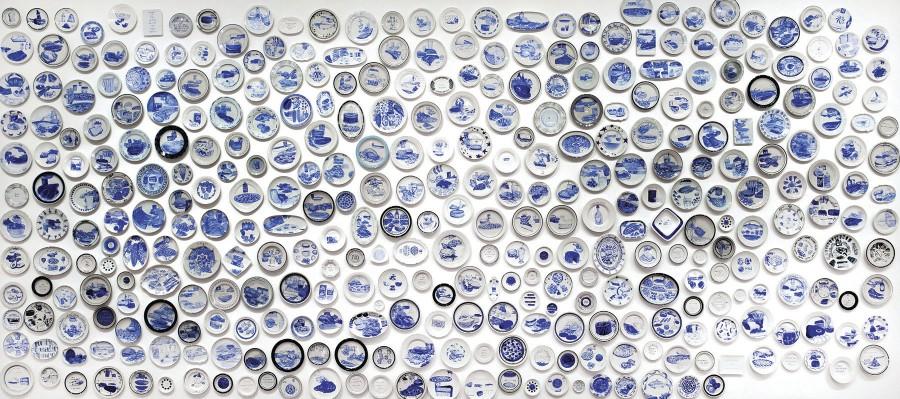Block Museum exhibit raises questions about the morality of capital punishment
Julie Green’s exhibit, “The Last Supper: 600 Plates Illustrating the Final Meals of U.S. Death Row Inmates,” opens Saturday at the Block Museum of Art. She began her project after reading a newspaper article about a death row inmate’s final meal.
May 7, 2015
A&E
Julie Green has painted nearly 50 plates of death row inmates’ final meals for the past 15 years straight, and she has no plans to stop — until capital punishment is abolished in the United States, that is.
She has made 600 plates, all white and ceramic, using cobalt blue mineral paint, which will be shown at the Block Museum of Art starting this Saturday through Aug. 9 in an exhibit called, “The Last Supper: 600 Plates Illustrating the Final Meals of U.S. Death Row Inmates.”
Green began her project after reading about a death row inmate’s final meal in the newspaper and decided to follow inmates’ narratives through the meals they requested, said Elliot Reichert, the museum’s special projects curator.
Reichert said the plates display final meals from inmates across most of the 50 states, with around one-third from inmates in Texas. According to PBS Frontline, Texas has executed more people than any other state in the modern era. There are plates depicting meals spanning from the late 1800s to more recent executions, Reichert said.
Green’s use of ceramics and the pale cobalt blue paint has a specific meaning, he said.
“There’s a uniformity to the color,” Reichert said. “There’s something about seeing the walls with the blue plates that has a memorializing effect because of the similarity.”
He also said using relatively small ceramic plates allows people to see the works on a human scale.
“There’s a delicacy to the glazing,” Reichert said. “There’s an intimacy, like a one-on-one connection with these plates that maybe you couldn’t get with a painting, which would probably be a little larger.”
Cynthia Noble, the museum’s engagement manager, agrees that a personal relationship that can be made with the art.
“The plates tend to humanize those who have been on death row and have been executed,” she said.
Reichert said the exhibit is very relevant in today’s political and cultural climate.
“There’s been a surge in the last couple of years or so of news and critical essays about the death penalty,” he said. “This issue continues to grip us, like with this project, so you see it all the time.”
Reichert also said the exhibit has further relevance for the Northwestern community because the University’s School of Law played a key part in the abolishment of the death penalty in Illinois. Additionally, as part of its many spring programming events, Block is partnering with the law school’s Center on Wrongful Convictions on May 19 to host an event featuring different perspectives on capital punishment, Noble said, including someone who was actually exonerated from death row.
“It’s very important for our Northwestern community,” Noble said, “(for) those on campus and other Northwestern University campuses, including students … to participate in a shared dialogue around an important political and social justice issue.”
Reichert said he hopes exhibit-goers will learn about capital punishment in a more personal way than they are used to.
“It’s one thing to read about it in the news … (and) put down the paper and go about your day,” he said. “In this case, the issues surrounding you, you have to confront it if you’re at the exhibit.”
Reichert also said he hopes people will leave the exhibit questioning their own beliefs instead of walking away with clear-cut ideas about capital punishment.
“People might go away with wondering, ‘What is the cost of capital punishment?’” he said. “‘Is this an effective means to deter crime, like it’s imagined to be?’ ‘Do we have an ethical or moral relationship to these condemned people, these executed people?’”
Hannie Lee, a docent at Block, said the most important aspect of the show is that it’s an ongoing effort and not just something in the past.
“It’s not just a display, it’s a living art,” the Communication senior said. “It’s a projection of so many more plates that are going to come … We already have 600 plates, and it’s only going to keep growing.”
Email: weizheyang2018@u.northwestern.edu
Twitter: @_rachelyang


